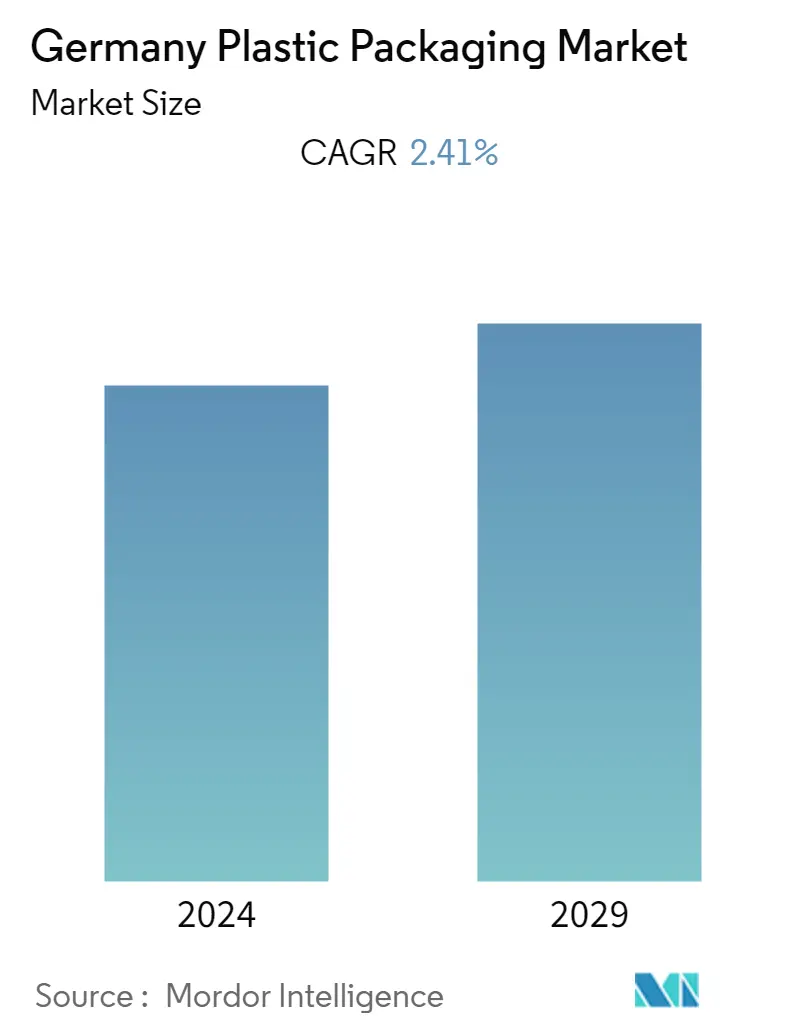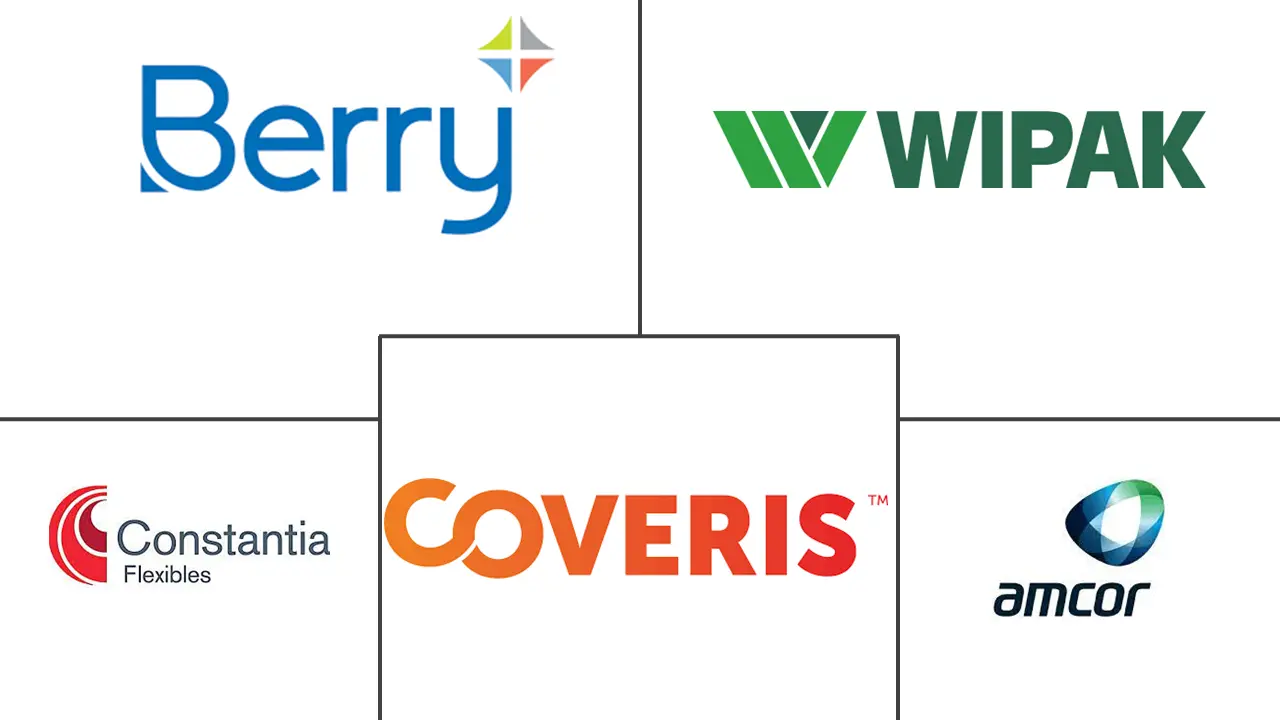Market Size of Germany Plastic Packaging Industry

| Study Period | 2019 - 2029 |
| Base Year For Estimation | 2023 |
| Forecast Data Period | 2024 - 2029 |
| Historical Data Period | 2019 - 2022 |
| CAGR | 2.41 % |
| Market Concentration | Medium |
Major Players
*Disclaimer: Major Players sorted in no particular order |
Need a report that reflects how COVID-19 has impacted this market and its growth?
Germany Plastic Packaging Market Analysis
The Germany Plastic Packaging market is expected to register a CAGR of 2.41% during the forecast period. Plastic packaging became popular among consumers over other products, as plastic is lightweight and unbreakable, making it easier to handle. Even significant manufacturers prefer plastic packaging, owing to the lower production cost. Moreover, introducing polymers, such as polyethylene terephthalate (PET) and high-density polyethylene (HDPE), is expanding plastic bottle applications. The market is witnessing an increasing PET bottles demand.
- Germany is increasingly adopting plastic packaging solutions, owing to the several developments in the country by the solution providers and different end users. The typical consumer perception of 'Made in Germany' goods provided a better performance space for the plastic packaging companies in the region. The government of Germany introduced several stringent regulations for the plastics packaging industry in Germany. The German Packaging Law requires packaging design for recycling, recyclability, and using recyclable and renewable materials. The government aims to recycle 63% of plastic packaging by the last year, up from 40% in 2018. Such measures are expected to profoundly impact the studied market in the envisaged timeline.
- Plastic containers are becoming essential in various end-user industries. New filling technologies and the emergence of heat-resistant packaging material opened up new possibilities and options in the market. While PET bottles are standard in multiple segments, beverages, cosmetics, sanitary products, and detergents are predominantly sold in polyethylene (PE) bottles.
- Furthermore, various German researchers held a meeting at the Czech Republic conference for such an issue discussion. Moisture permeation is one of the common challenges that can impact product quality. A more accurate and reproducible method to determine how effective the packaging is at keeping moisture out would benefit the industry. Accordingly, USP recently revised the packaging and moisture permeation chapters (USP General Chapter Containers-Performance Testing) to include a new method for determining moisture permeation for high and low-barrier pharmaceutical packaging. USP is also considering changing the USP classification system for the packaging, which is limited so far to 'well-closed,' 'tight,' and 'hermetic' containers.
- Since the past decade, awareness among the population regarding the harmful effects of plastic usage is growing drastically. Many public campaigns and initiatives by governments have resulted in increased awareness among the public. Thus, the consumption of plastic packaging witnessed a significant impact in the past few years.
- The growth of the frozen packaged industry across Germany is expected to impact the market positively. For instance, according to Frozen Food Europe, Germany, France, and the United Kingdom account for more than 50% of the frozen food market in Europe. The government-mandated lockdown due to the COVID-19 pandemic aided frozen food sales in many regions and thus impacted the market positively. After the pandemic, the market grew with increased food delivery services.
